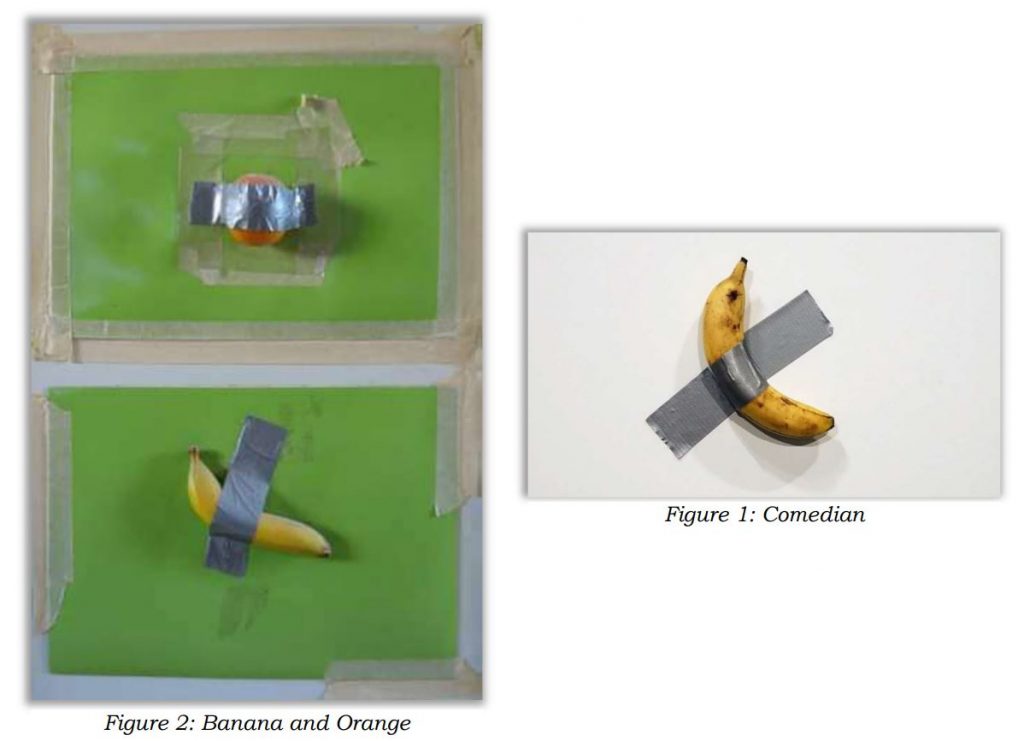Eleventh Circuit Gives the Slip to the Duct-Taped Banana Copyright Appeel–Morford v. Cattelan
You probably recall this case. A California artist, Morford, created a work called “Banana and Orange” where he duct-taped the fruits to the wall. An Italian artist, Cattelan, created a work, “Comedian,” involving just a banana duct-taped to the wall. Cattelan sold Comedian for $100k+ (seriously?) and Morford sued him for copyright infringement. The works at issue (Morford’s on the left, Cattelan’s on the right):
I could teach an entire semester’s Copyright class around this one case. It implicates most of the key issues, including copyrightability (especially the idea/expression dichotomy); infringement; and fair use. The district court dismissed the case on several grounds. The Eleventh Circuit agrees, quietly dismissing the case in an unpublished opinion.
* * *
The short opinion addresses the copying-in-fact element, sidestepping the possibly more interesting copyrightability, wrongful copying, and fair use questions. The opposite of “copying-in-fact” is independent creation, i.e., the defendant independently executed a similar output to the copyright-protected work. Independent creation is a non-infringement, but defendants often admit to copying-in-fact or it’s obvious from the overlaps that are beyond random chance.
It’s possible that Cattelan independently developed the idea of doing duct-taped bananas without ever knowing about Morford’s piece. It seems more likely that Cattelan heard the idea and decided to riff on it–something copyright law permits. Either way, Morford can’t establish the legal foundation of copying sufficient to “disprove” independent creation.
Morford claimed that Cattelan presumptively knew about his work because it “was available on his public Facebook page for nearly ten years, was featured in one of his YouTube videos, and was also featured on a blog post.” The court responds that simply having the work online isn’t enough to establish that the defendant saw it rather than independently created the work. Morford has to show that the online disclosures “enjoyed considerable success or publicity,” which he didn’t do.
Morford argued that the works were “strikingly similar” so that access to his works could be inferred. The court responds:
Although the use of the same two incongruous items (a banana and duct tape) are indeed similar, there are sufficient differences in the two displays to preclude a finding of striking similarity. For example, Banana and Orange contains both a banana and an orange held by duct tape, while Comedian only contains a banana held by duct tape
* * *
I’m so fascinated by this case…so much so that the High Tech Law Institute used it as inspiration for our marketing material:
* * *
NOVEMBER 2024 UPDATE: Cattelan sold a version of “Comedian” for $6.2M to a cryptobro. The price tag makes everyone else question their life choices. The fruit will rot in a few days (unless it’s eaten beforehand), but it did come with a more durable “certificate of authenticity” and DIY instructions for recreating the art.


